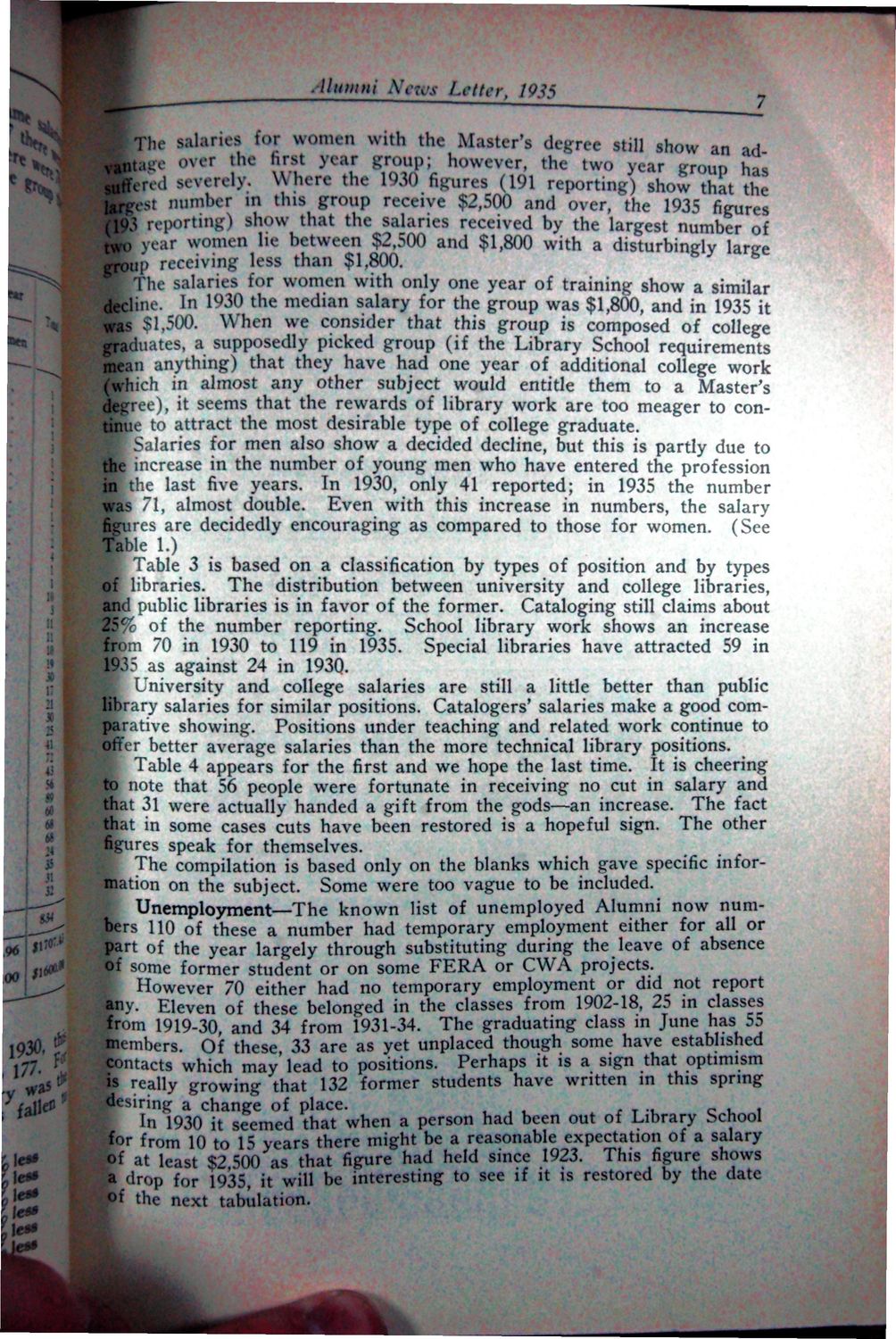| |
| |
Caption: UI Library School Alumni Newsletter - 21
This is a reduced-resolution page image for fast online browsing.

EXTRACTED TEXT FROM PAGE:
Alumni News Letter, 1935 The salaries for women with the Master's degree still show an ad ^ntaue over the hrst year group; however, the two year grout) ivis juffered severely- \Vhere the 1930 figures (191 reporting) show that the arrest number in this group receive $2,500 and over, the 1935 figures "(193 reporting) show that the salaries received by the largest number of two vear women lie between $2,500 and $1,800 with a disturbingly large roup receiving less than $1,800. J The salaries for women with only one year of training show a similar declim • In 1930 the median salary for the group was $1,800, and in 1935 it was $1,500. When we consider that this group is composed of college raduates, a supposedly picked group (if the Library School requirements I a n anything) that they have had one year of additional college work (which in almost any other subject would entitle them to a Master's egree), it seems that the rewards of library work are too meager to coniniK to attract the most desirable type of college graduate. BSalaries for men also show a decided decline, but this is partly due to the increase in the number of young men who have entered the profession in the last five years. In 1930, only 41 reported; in 1935 the number was 71, almost double. Even with this increase in numbers, the salary figures are decidedly encouraging as compared to those for women. (See fable 1.) H Table 3 is based on a classification by types of position and by types of libraries. The distribution between university and college libraries, and public libraries is in favor of the former. Cataloging still claims about 25% of the number reporting. School library work shows an increase from 70 in 1930 to 119 in 1935. Special libraries have attracted 59 in 1935 as against 24 in 1930. University and college salaries are still a little better than public library salaries for similar positions. Cataloged salaries make a good comparative showing. Positions under teaching and related work continue to offer better average salaries than the more technical library positions. Table 4 appears for the first and we hope the last time. It is cheering to note that 56 people were fortunate in receiving no cut in salary and that 31 were actually handed a gift from the gods—an increase. The fact that in some cases cuts have been restored is a hopeful sign. The other figures speak for themselves. The compilation is based only on the blanks which gave specific information on the subject. Some were too vague to be included. Unemployment—The known list of unemployed Alumni now numbers 110 of these a number had temporary employment either for all or part of the year largely through substituting during the leave of absence of some former student or on some FERA or CWA projects. However 70 either had no temporary employment or did not report any. Eleven of these belonged in the classes from 1902-18, 25 in classes from 1919-30, and 34 from 1931-34. The graduating class in June hasi 55 members. Of these, 33 are as yet unplaced though some have established contacts which may' lead to positions. Perhaps it is a sign that optimism is really growing that 132 former students have written in this spring desiring a change of place. c u t In 1930 it seemed that when a person had been out of Library School for from 10 to 15 years there might be a reasonable expectation of a salary of at least $2,500 as that figure had held since 1923. This figure shows a drop for 1935, it will be interesting to see if it is restored by the date °f the next tabulation. •
| |